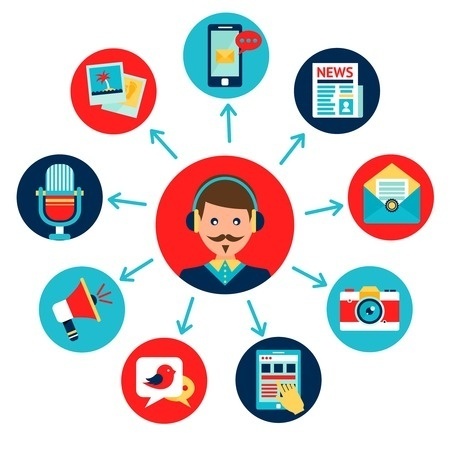DIGITIZATION IN COMMUNICATION

Over the past few years, there has been a lot of noise about digital transformation in the workplace. We’re told that as the business world starts moving faster and becoming more global, ‘digitization” is the only way to keep up. But what do we mean by digitization?
Digital transformation means many different things to different people. In general, we think of it as the transformation of business activities and processes to leverage digital technologies. But technology in and of itself is not the answer – to be meaningful, it is more of a way of doing things rather than the thing itself.
Digitization is the process of converting information into a format, in which the information is organized into bits. The result is the representation of an object, image, sound, document or signal (usually an analog signal) by generating a series of numbers that describe a discrete set of its points or samples. The result is called digital representation or, more specifically, a digital image, for the object, and digital form, for the signal. In modern practice, the digitized data is in the form of binary numbers, which facilitate computer processing and other operations, but, strictly speaking, digitizing simply means the conversion of analog source material into a numerical format; the decimal or any other number system that can be used instead.
There is no shortage of new digital technologies to invest in, from social, mobile, big data, cloud, IoT, etc. The challenge for businesses is to figure out what their business needs are first, and where they want their business to go – and then understand where the new frontiers of value are that will meet their specific needs.
Often the rush to fix a one-off problem results in a solution that is not integrated with the rest of the business infrastructure – including the employees themselves. The promise of a digital workplace that is more agile, productive and responsive is terrific, but to successfully transform means a real focus on the human elements.
Employee engagement, user experience and adoption of the new tools make the difference between success and failure. One of the most important elements, if not THE most important element of a successful workplace, is effective communication. Using the right technology to transform the way employees and customers engage, interact and build relationships needs to be top of mind for all organizations.
So how do communication and collaboration play a role in digital transformation? Here are eight key ways:
- New cloud-based “Unified Communications and Collaboration” solutions are key to enabling the digital workplace and flexible work lifestyles
- Employees can log in from anywhere on any digital device, and the system will immediately recognize them, their teams and all their contacts
- Presence capabilities let users find colleagues quickly and immediately begin messaging to share real-time information
- If the users need deeper collaboration, they simply click on the audio or video button to begin an audio or face-to-face call
- Screen sharing is also available for document sharing and updating, as well as sending files – all right from the same application
- Downloadable mobile apps mean that your smartphone (personal or otherwise) essentially puts your desk phone in your pocket
- The business itself benefits from lower costs, more flexibility and higher reliability than is typically available from legacy phone systems this all works over the new IP-based networks, providing faster speeds and better quality.

Comments
Post a Comment